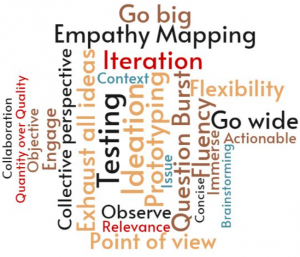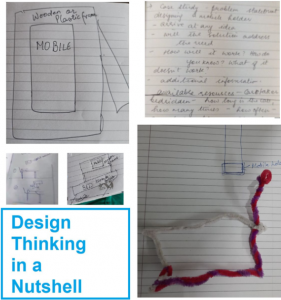Design Thinking for Schools
There is a verse that reads, “let the wise listen and add to their learning.” The solution-oriented Design Thinking for Schools course, facilitated by riveting design thinkers and educators from TISS, CLIx and MIT, and attended by 24 educators from across India, provided a wealth of wisdom to add to our pedagogical practices.
Design Thinking Process
The very first activity had all of us design novices creating a prototype of a mobile phone holder for a hypothetical user, Narmada. This activity began the discovery of us as designers. The questions that arose were inevitable: Are our ideas good? Will we collaborate? Will we contribute? Are we team players? The inception of failing fast and failing forward began to take shape as we collaborated and discussed our ideas with my teammates. Nevertheless, the process was not as complicated as those tangled questions in our minds.
The process of design thinking begins with compiling the Empathy Map that enables us to think, see, and feel like the end-user, consequently laying a strong foundation to our final solution. As Grade 10 students at our school embark on creating a Team Project, we want to begin by familiarizing them with the first three phases: creating Empathy Maps, Defining Problem Statements and Ideating. These processes will help our young designers, as it helped us, to recognize that the users are the cynosure of the design. We learned that most of the design thinking process is iterative and getting emotionally attached to our ideas would only impede the success of the final phase. Play-testing phases that incorporate feedback loops are vital to the process. These practices now define us as designers.
Literature Ludo
During the course, we applied the design thinking process in creating an online, collaborative, interactive board game using Google Slides for our high school students to engage with unseen passages by analyzing them for their writing conventions and literary features. Our journey in creating this game is outlined in the images below.
The TISSx Design Thinking course afforded us the opportunity to extend ourselves as educators. Our board game, just as our design thinking skills, continues to need refinement. However, this experience has allowed us to believe that we can successfully design solutions to enhance the learning interactions we wish to curate for our students.
The Learning Curve International School, Mysore, Karnataka






